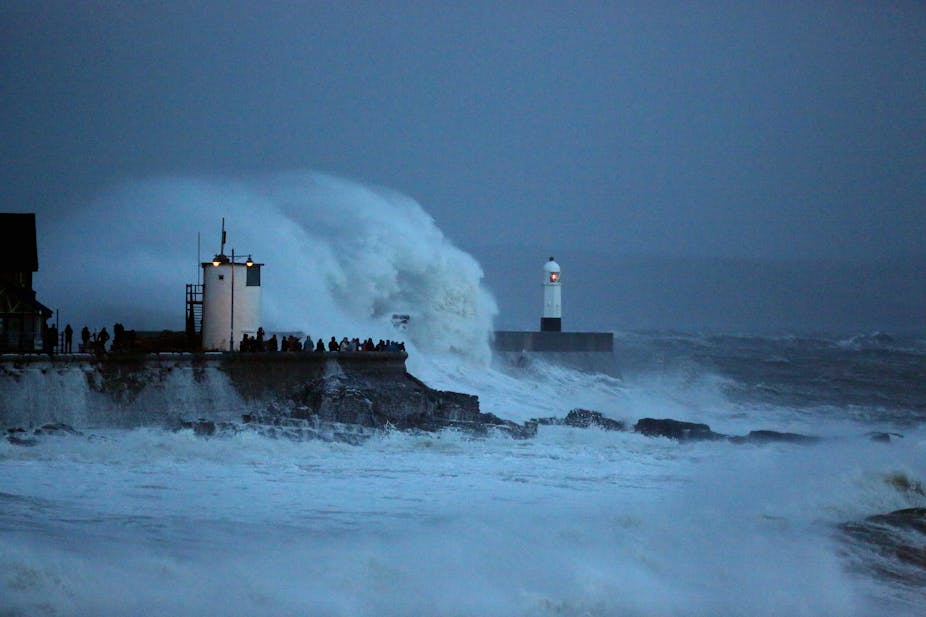Change at the British coastline is a reality we have always lived with. A thousand years ago, King Canute showed his courtiers how absurd it was to seek to command the waves. Later, others built sea walls and estuary defences.
Stretches of sandstone cliffs provided natural protection, as did shingle heaped by the sea. Revetments were added, sea walls raised, lately boulders and rocks too, yet still churches, houses and some whole settlements have fallen into the sea. Now the National Trust reminds us, the twin pressures of rising sea levels and extreme weather mean we need urgently to adapt to the impact this will have on our coastlines and its people and wildlife.
Britain’s coastline is an important part of the country’s character and needs to be managed well. My experience of spending a year walking 400 miles and boating another 100 along the coasts of Essex, Suffolk and Norfolk highlighted to me how strongly the coastline defines the character and identity of this whole region.
From the landscape of beach, sea wall and marshland, to the ecology, economy and cultures of fishing, farming, sailing and bird watching. Coastlines are host to created communities, deserted resorts, eroding cliffs, villages under water, caravan parks and new, entirely invented places. On the marshes, curlews call and peregrines swoop.
Increased risk
But to these coasts that have always ebbed and flowed comes a new risk: our voracious consumption of resources is boosting the power of nature. Some see it coming, many are in denial. As the National Trust are warning, it is time to adapt to this growing reality.
Warm water takes up more volume than cold, and climate change will raise sea levels this century. In the pre-industrial era, CO2 concentrations were 280ppm in the atmosphere; now they have just passed 400ppm. At the current annual rate of 2ppm per year, three decades from now will see global atmospheric concentration exceed 450ppm, causing seas to rise by 0.5 to 1.7 metres.
This may only be the start. To restrict concentrations to 450ppm, a 50-85% reduction in carbon dioxide emissions is required by 2050. Emissions did fall in 2009, but that was because of the credit crunch and following recession. If hopes for returns to year-on-year economic growth are met, then emissions will rise again.
There is thus little current prospect of atmospheric concentrations stabilising, and some now talk of a warming of as much as four degrees Celsius as possible this century. Major changes in our behaviour and rapid increases in our use of non-polluting technologies are going to be needed. Rising temperatures will raise sea levels, affecting millions worldwide, particularly low lying areas with long coastlines.
Domestically, climate change has brought alternating drought and floods, and the policy focus has turned inland. The drenching rains of this winter poured off hills, saturated fields, burst banks, filled reservoirs, covered fields and flooded villages. Protection from flooding is clearly needed, as is better land management of whole catchments.

But we should not forget the coasts. Money is short and has been diverted to rivers. Let the coast go, say some; leave the sea walls unrepaired. For an island nation, this would be a mistake.
Since the 1953 floods that still scar the memories of many, the sea defences along the whole of the coast have been raised, strengthened with concrete, and raised again. What we now know is that both hard and soft defences are needed, and different choices need to be made for each habitat on the coast.
Managing the retreat
A managed retreat has begun in some locations. The first deliberate breach of defences was in Essex to create new salt-marshes, first at Tollesbury in 1995, then Abbots Hall Farm and now at Wallasea Island. This is sensible, as marshes can act as “soft defences”, absorbing the power of storm surges and preventing flooding inland.
But managing a retreat before the sea does not work everywhere. Many homeowners in low-lying areas at risk of flooding feel that government and local agencies have not invested sufficiently in ensuring existing sea and estuary defences remain strong.
True, there are some areas – cliffs especially – whose susceptibility to the elements is hard to counter, as the many settlements that have been lost over the centuries shows us. Yet every house lost, every patch of land, is a place locked up with memory and identity. They matter to local people.
We may have to let more land go. Perhaps a beach will lose its sands. There will be difficult choices, but to do nothing will be the worst outcome for all. In the face of climate change, rising sea levels and extremes of weather, we must manage this assault on our coastlines with a mixture of defence, adaptation and retreat.

